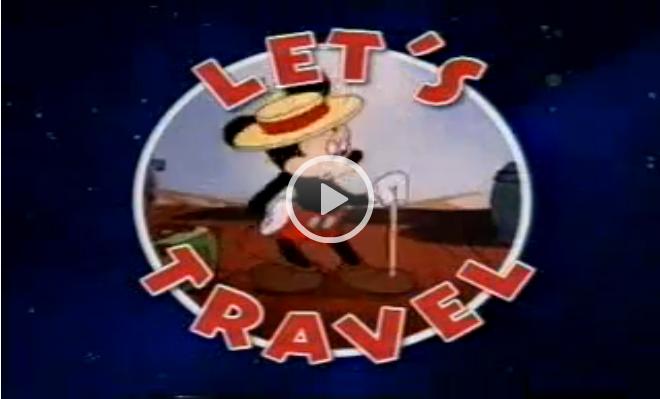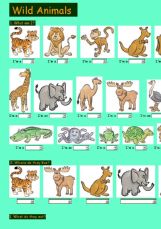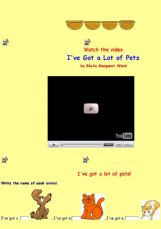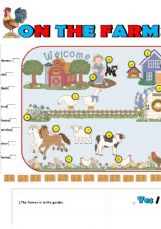SCIENCE 1ST GRADE
PRIMARY RESOURCES
UNIT 15: ¡ TODOS AL TRABAJO! JOBS- People have different types of Jobs.
- A gardener Works with plants.
- A teacher Works with children.
- A postman officer protects the town and enforces traffic laws.
Unidad 15: ¡Todos al trabajo!
|
Web interactivas
|
Jclic
|
Trabajos en la naturaleza
| ||
|
| ||
|
| ||
El trabajo en fábricas y talleres
| ||
Personas que nos ayudan
| ||
|
| ||
|
| ||
¡Vaya tela!
| ||
Investigo sobre una profesión
| ||
The works (1º)
The works (1º)
- Practica online aquí.
- Vocabulario aquí.
- People song.
UNIT 14: ¿ DE QUÉ ESTÁN HECHAS LAS COSAS? HOW ARE THINGS MADE?
Materials
|
||
The Earth and materials
|
||
Usamos muchos materiales
| ||
Las herramientas y las máquinas
| ||
Reciclar es tarea de todos
| ||
Fabrico una marioneta
| ||
Materials (1º)
| ||

UNIT 13: "LET´S TRAVEL" Practicar online
Vídeo Magic English: Let's travel"
Unidad 13: Vamos de viaje
|
Web interactivas
|
Jclic
|
|
| ||
Los medios de comunicación
| ||
El mundo en tus manos
| ||
Viajo en transporte público
| ||
The transport (1º)
| ||
Means of transport
Means of communication
|
||
UNIT 12: "MY TOWN"
- UNIDAD DIDÁCTICA
- CITY OR VILLAGE?
- WORSHEET 1
- WORSHEET 2
- WORSHEET 3
- PEOPLE IN MY TOWN
- THE POLICEMAN AND THE FIREFIGHTER
- AT THE HOSPITAL
- MY TOWN
- SELF-EVALUATION
| Places |
 |
| People in my town |
Unidad 12: El lugar donde vivo
|
Web interactivas
|
Jclic
|
Así son los pueblos
| ||
Así son las ciudades
| ||
Pueblos fantasma
| ||
Cuido lo que es de todos
| ||
- · LOS PAISAJES DE MONTAÑA.MOUNTAIN LANDSCAPES.
- · LOS PAISAJES DE LLANURA. FLAT LANDSCAPES.
- · LOS PAISAJES DE COSTA. COASTAL LANDSCAPES.
MOUNTAIN
LANDSCAPES: Una montaña es una gran
elevación de terreno. En las montañas nacen muchos ríos. En los paisajes de
montaña también podemos ver otros elementos naturales, como los bosques y los
valles.
Las personas construyen
pueblos en las montañas. Los pueblos de montaña son pequeños y en ellos viven
pocas personas. Las carreteras que comunican estos pueblos son estrechos y
tienen muchas curvas.
En los
paisajes de montañas hay montañas, bosques y valles. Los ríos de montaña son
estrechos y los pueblos , pequeños.
In a mountain landscapes there are mountains, forests
and fields. The mountains are covered in snow. In some mountain landscapes,
there are villages and roads. Mountain villages and roads are small.
FLAT
LANDSCAPES: Una llanura es un terreno
plano, en el que no hay montañas. Los ríos que bajan de las montañas son más
anchos cuando atraviesan la llanura y sus aguas son más tranquilas. En las
llanuras podemos ver prados y bosques cerca de los ríos.
En las zonas llanas, las
personas cultivan los campos. Además, construyen carreteras, autopistas o vías
de tren.
Los pueblos y ciudades de
la llanura son grandes y en ellos viven muchas personas.
En los
paisajes de llanura, el terreno es llano. Hay prados, ríos anchos, campos de
cultivo, carreteras y autopistas. Los pueblos son grandes.
COASTAL LANDSCAPES: la costa es el terreno que está
Recursos
Unit 11
|
Web interactive
|
Jclic
|
Landscapes (1º)
| ||
Chant
UNIT 10: RETURN SPRING (VUELVE LA PRIMAVERA)
- WEATHER
- CLOTHES
- DAYS OF THE WEEK.
- MONTHS OF THE YEAR
- SEASONS
- THE CALENDAR
 CLOTHES: What do you wear in...? I wear...(coat, trousers, jeans, shoes, boots, sandals, swimsuit, scarf, wolly hat, raincoat, shorts, jacket, T-shirt...
CLOTHES: What do you wear in...? I wear...(coat, trousers, jeans, shoes, boots, sandals, swimsuit, scarf, wolly hat, raincoat, shorts, jacket, T-shirt...DAYS OF THE WEEK. There are seven days in a week. Monday, Tuesday, Wednesday, Thursday, Friday, Saturday and Sunday.
Interactive activities
MONTHS OF THE YEAR. There are twelve months in a year. January, February, March, April, May, June, July, August, September, October, November and December.
Interactive activities
English exercises.
SEASONS. The year has four seasons.
In Winter it is cold and snowing in some places. Many trees remain leafless. Spring rains and the temperature is warm.
In Spring: It rains and the temperature is warmer. Most flowers Bloom.
In Summer it is hot and not usually rain. Plants lose their leaves and bear fruit.
Cool and rainy in autumn . Many trees lose their leaves.
Discovering autumn: SWALLOWS
THE CALENDAR.
Interactive :Months, days, seasons.
Interactive: Weather
Video: Magic English "Changing Seasons"
UNIT 9: WE NEED WATER
- Water is all around us.
- Types of water.
- We need water.
- Using water.
- Saving water.
- Solid, liquid and steam.
WATER IS AROUND US
You can see water in many different places. There is water in the sea, in rivers and in lakes. Rain and snow are made of water.
Video: Water, water everywhere
TYPES OF WATER
The water in the oceans and seas is salt water. We cannot drink salt water. The water in rivers and lakes is fresh water. We can drink clean, fresh water.
WE NEED WATER
Wild animals get water from a lake. Plants get water from the rain. Children get water from the tap. Birds get water from puddles.
Water is very important . All living things need water to live. Animals and birds need water to live. Plants need water to live. Humans need water to live.
Video: Water changes everything.
BOOK
USING WATER
We use water to do many things at home. We flush the toilet. We wash the dishes. We play. We water the plants. We drink water. We brush our teeth...
Los seres vivos necesitamos el agua para vivir. Las personas también utilizamos el agua asearnos, para cocinar...e incluso para divertirnos.
Para que siga habiendo vida en la Tierra es importante cuidar el agua.
SAVING WATER
Video: Hero of salving water.
SOLID, LIQUID AND STEAM
Water can exist as a liquid as a solid or as steam. The water you drink is a liquid. Ice is solid water. Ice is very cold. Steam is very hot water.
States of Water: Video
The water cycle song
UNIT 8: PLANTS
- The parts of a plant.
- What do plants need?
- Plants grow.
- Plants change.
- Where do the plants grow?
- Plants are important.
Plants are living things. All plants have got roots, a stem and leaves. Some plants have got flowers. Trees are plants. The stem of a tree is a trunk.
(Las plantas son seres vivos. Todas las plantas tienen raíces, tallo y hojas. Algunas plantas tienen flores. Los árboles son plantas. El tallo de un árbol es un tronco.)
SONG: "PARTS OF A PLANT"
What do plants need?
Plants need sunlight, water, soil and air to live.
(Las plantas necesitan luz del sol, agua, tierra y aire para vivir.)
SONG: "THE NEED OF A PLANT".
Plants change
Plants change during the year, ( spring, summer, autumn, Winter)
Las plantas cambian durante el año.
Where do plants grow?
Plants grow in many different places. Some plants grow in hot, dry places like the desert or beach. Other plants grow in cool, wet places like the forest or a pond.
Plants are important.
We use plants for food.
We use plants for furniture.
We use plants for decoration.
Hay plantas silvestres y plantas salvajes. Hay plantas que crecen en la naturaleza sin nadie que las cuide. Son plantas salvajes.
Otras plantas las sembramos y las cuidamos las personas. Son plantas cultivadas.
Para cultivar plantas hay que sembrar las semillas, regarlas y abonarlas. Por último, se recoge la cosecha.
AICLE :I LOVE PLANTS
AN INTRODUCTION ABOUT THE PLANTS
WORKSHEET 1 Label the Parts of a Plant
WORKSHEET 2 My Parts of a Plant Booklet
WORKSHEET 3 Life Cycle of a plant
PLAY TIME!
UNIT 7: WHERE DO ANIMALS LIVE?
- Los animales salvajes (wild animals)
Wild animals live in natural places like forests and rivers. (Eagle, crocodile, giraffe, fox)
Domestic animals live in our homes or on farms ( cat, pig, cow,dog,
Los animales salvajes buscan refugio y alimento por sí mismo.
Algunos animales, como la ballena azul, corren el riesgo de desaparecer si no cuidados los lugares donde viven.
- Los mamíferos, las aves y los reptiles (mammal, fish and reptile)
La cigüeña es un ave. Las aves tienen el cuerpo cubierto de plumas. Son animales ovíparos.
La tortuga es un reptil. Los reptiles también son ovíparos y tienen el cuerpo cubierto de escamas.
- Los peces y los anfibios (fish and anphibians)
La salamandra es un anfibio. Los anfibios viven en el agua o cerca de ella. Tienen la piel desnuda y húmeda. También son ovíparos.
Eagles can fly, tigers can run, dolphins can swim.
Birds are covered with Bathers.
Mammals are covered with fur.
Birds are born from eggs.
Mammals are born from their mother´s tummy.
Some animals live on land and some animals live in the water.
- VIDEO 1: "GROUP OF ANIMALS
- VIDEO 2: "ANIMALS AROUND US"
- INTERACTIVE ACTIVITIES.
- ZOO GAMES
- BLOG: EL PERCHERO.
- WORKSHEET 1: MAMMAL ANIMALS
- WORKSHEET 2: REPTILES
- WORKSHEET 3: FISH
- WORKSHEET 4: BIRDS
UNIT 6: ANIMALS
 |
| Canción de los animales |
- Cómo son los animales:
Otros animales tienen alas (wings )y vuelan (fly) por el aire. Su cuerpo está cubierto de plumas(feathes)
Y otros animales tienen aletas (fins) y nadan (swim) en el agua. Su cuerpo está cubierto de escamas (scales)
They have got / it has got...(legs, fur, wings, feathes, fins, scales,shell)
They/it can (walk, fly, swim, slithers)
- Los animales se alimentan.
Otros animales como el león se alimentan de carne. Son animales carnívoros.
Y otros como el mono comen de todo tipo de alimentos. Son animales omnívoros.
- Cómo nacen los animales.
Viviparous animals are born from their mother´s womb.
Otros animales nacen de huevos. Son animales ovíparos ( el gorrión)
Oviparous animals are born from an egg.
To learn
Video:20 Wild Animals. Magic Enghish.
Video: Type of animals.
Video: All about animals
VOCABULARY
- Farm animals
- Pets.
- Insects.
- Birds
- Reptiles.
- Sea animals.
- African animals
- History: THE TWINS WEEK
- Video : OLD MACDONAL HAD A FARM
- Describing animals
- Crosswords
- Bloque temático 6
- Animals (PDF)
- Animals description (PDF)
- Unit "Farm Animals" (PDF)
- Unit "Animals I know"
UNIT 5: VIVIMOS EN FAMILIA : FAMILY
- Todos tenemos una familia.
- Las personas de una familia conviven , se ayudan y se reúnen para celebrar fiestas.
- Family members:
- Actividades interactivas
- Vídeo Magic English: Family.
- Flashcards
- Worksheet: Read and match
- Worksheet: Circle
- Worksheet 1.
- Worksheet 2.
FAMILY
UNIT 4:"¿Cómo es tu casa? How is your house? "
 |
| Interactive Book |
- Distintos tipos de casas. Different types of houses
- Construimos casas. Build houses
- La casa por dentro. Inside the house
Vídeos " Magic English"
At home part I At home part II
At home part III
UNIT 3: "Alimentos para crecer" " Food"
- Hay distintos tipos de alimentos: fruta, verdura, leche, pescado, cereales...
- There are four food groups:
Fruit and vegetables.
Dairy.
Bread and cereales.
- Fruta y verduras . Fruit and vegetables
Apples, pear and bananas are fruit. Onions, carrots and potatoes are vegetables.
- Algunos alimentos se obtienen de los animales y otros, de las plantas.
- Food from plants. Food from animals.
Fruit and vegetables come from plants.
- Food from animals. Hen (gallina), cow (vaca), pig (cerdo), eggs ( huevos), milk (leche), ham (jamón).
- Comida sana y comida no sana.
- Healthy food and unhealthy food.
Healthy food is good for your body. Fruit and vegetables are healthy. Unhealthy food is bad for your body. Pizza and cake are unhealthy.
- Hay cuatro comidas: Desayuno, almuerzo, merienda, cena.
- There are four meals: Breakfast, lunch, snack and dinner.
- Nos alimentamos bien. Healthy food habits.
Food and meals (PDF) . Libro de ejercicios para practicar vocabulario.
1. BRAINSTORMING TIME!
2.VIDEO TIME!
3. PLAY TIME!
**QUINTRICIOUS!. JUEGA CON ESTE PEQUEÑO DINOSAURIO A CLASIFICAR LOS ALIMENTOS.
 |
***COOKING WITH DORA IN THE KITCHEN
COCINAMOS CON DORA EN LA COCINA
***LISTEN AND GUESS!
|
***REVIEW YOUR VOCABULARY WITH THIS ELF NET.
Food
Click on the snail, in the circle "food" -->  and listen to the boy presenting some food. Then, do the activities.
and listen to the boy presenting some food. Then, do the activities.
 and listen to the boy presenting some food. Then, do the activities.
and listen to the boy presenting some food. Then, do the activities.
If you click on the butterfly, in the circle "food" --> you will find some more food and more activities.
you will find some more food and more activities.
Numbers, Shapes, Tools, Toys, Transport  you will find some more food and more activities.
you will find some more food and more activities.Buy food in the supermarket !!
Play this game and buy all the food before time is over. Good luck !!
Fruit or vegetables ? Play the game
In this game you have to choose fruit or vegetables to put in the basket. Go for it !!
4. READING TIME!
UNIT 1: MY BODY
-Animals (PDF)
GROW HEALTHY AND GOOD HABITS
PLANTS
WATER
SEASONS AND WEATHER
LANDSCAPES
-Bloque temático 11
-Unit "Enjoying landscapes" (PDF)
-Unit "Why don´t we travel"? (PDF)
-Unit "Let´s work" (PDF)
-Unit "Enjoying landscapes" (PDF)
TRANSPORTS
-Bloque temático 12-Unit "Why don´t we travel"? (PDF)
JOBS
-Bloque temático 13-Unit "Let´s work" (PDF)
***TIPS FOR CHRISTMAS!
***TIPS FOR THANKSGIVING DAY!



























Always look forward for such nice post & finally I got you. Really very impressive post & glad to read this. Good luck & keep writing such awesome content.
ResponderEliminarWeb Development Company in Greater Noida
Software development company In Greater noida
CMS and ED
CMSED
Homoeopathic treatment for Psoriasis in greater noida
Kidney Disease Homoeopathy Doctor In Greater Noida